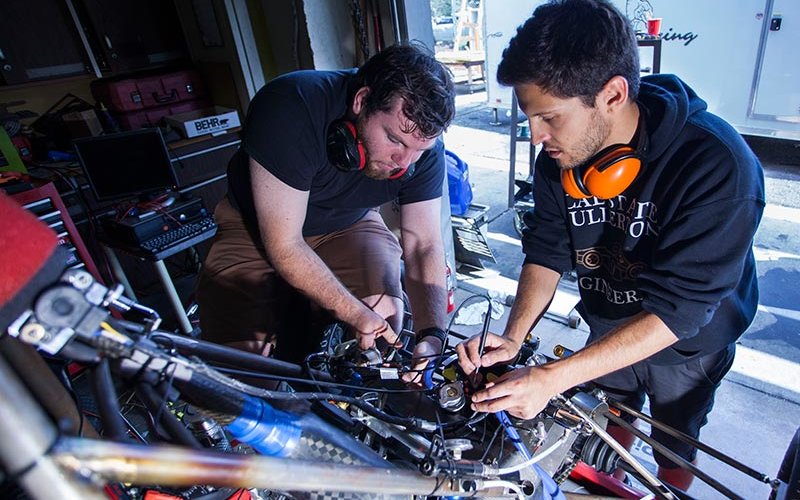
The Titan Formula SAE racing team will put the pedal to the metal to race in a June 15-18 SAE International competition in Lincoln, Nebraska, against 80 collegiate teams from around the world.
Last year’s team encountered irreparable chassis failure and was forced to withdraw just days before the race.
“This year’s team has worked especially hard to improve their structural composite design and manufacturing approach, drawing from difficult lessons learned from the 2014-15 team,” said faculty adviser Joseph Piacenza, assistant professor of mechanical engineering.
“While last year’s withdrawal was a disappointment, it was a great opportunity for the students to address real-world design and manufacturing issues and iteratively make the necessary changes to minimize the likelihood of this event happening again.”
For the 31-member team of student engineers — mechanical and electrical engineering, business administration and computer science majors — that is what engineering is all about: problem-solving, learning from mistakes and pushing forward, agreed Matias Araya, team captain and mechanical engineering major.
“Our goal this year was to build a faster, lighter, safer and more technologically advanced car,” Araya said. Alumni also shared their knowledge and expertise to overcome potential obstacles. CSUF’s 2014 team finished 12th overall in that year’s SAE competition.
Since fall, students have spent countless hours and sleepless nights designing, building and fine-tuning the vehicle, dubbed “Titan IX” since it is the ninth Formula-style car a CSUF team has manufactured for the competition.
Improvements include redesign of the intake and exhaust systems and a new cooling system to keep the engine at the optimum operating temperature, Araya explained. The car also has new carbon-fiber wheel rims to help reduce the vehicle’s weight, as well as innovative aerodynamics to achieve faster lap times.
“It’s not about speed, but how we can quickly achieve acceleration,” said Araya, adding the car can top 60 mph in 3½ seconds.
To make the project and 26-hour road trip to Nebraska possible, the team raised funds and received in-kind donations from industry supporters, such as the Boeing Co., SpaceX and Airtech International.
The team’s hope this year is to compete strongly and regain the momentum seen in previous years.
“I want to make sure this year’s team progresses and continues the legacy that has been left for us,” Araya said.
Follow the team on social media: Instagram